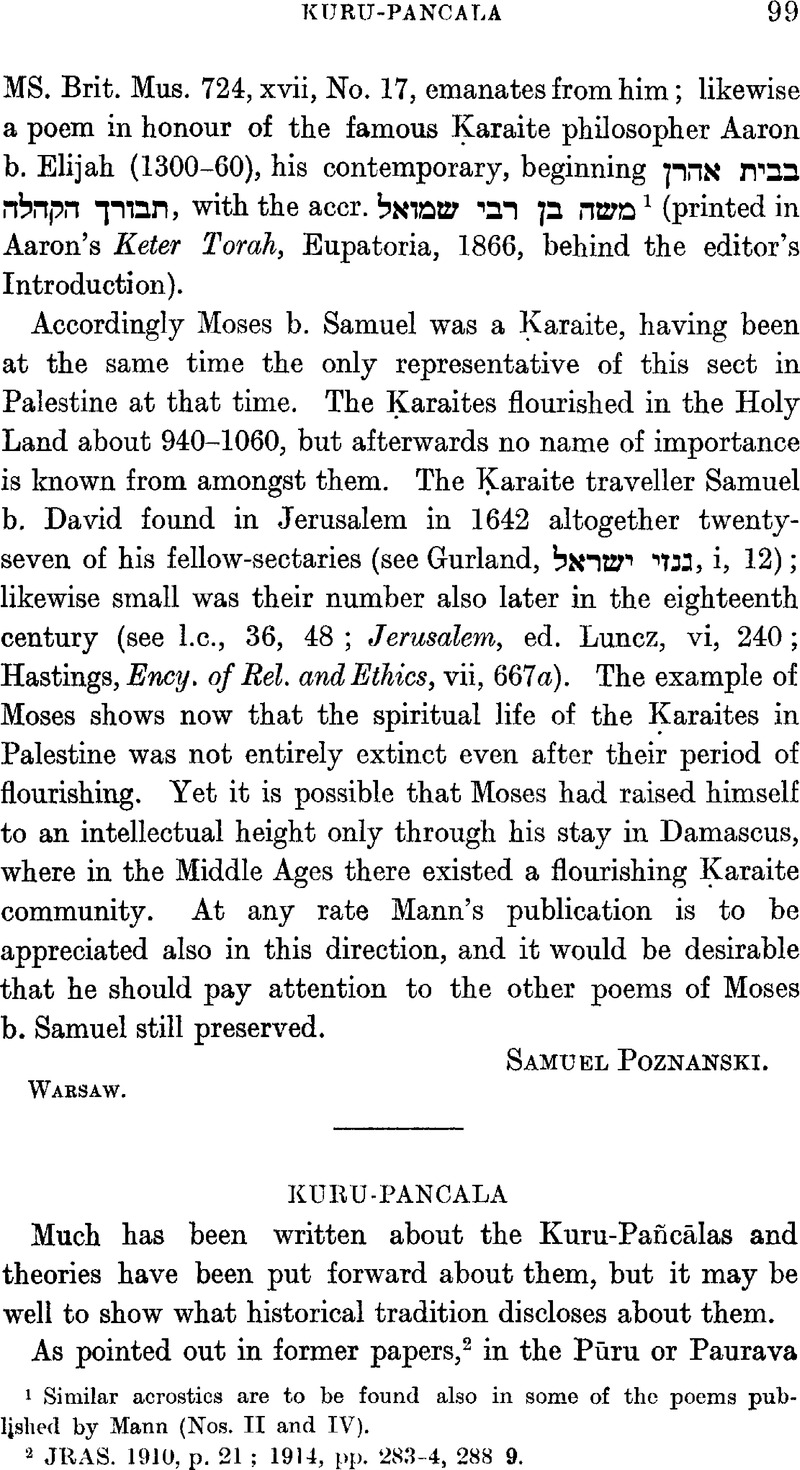No CrossRef data available.
Article contents
Abstract

- Type
- Miscellaneous Communications
- Information
- Copyright
- Copyright © The Royal Asiatic Society 1920
References
page 99 note 2 JRAS. 1910, p. 21Google Scholar; 1914, pp. 283–4, 288, 9.
page 100 note 1 Much as we speak of Rhodesia and the Rhodesians.
page 100 note 2 His name has nothing to do with Krivi, which existed long before him.
page 100 note 3 These Kurus have nothing to do with the Uttara Kurus. It was not uncommon for persons to have the same names as countries and peoples, cf. e.g. Kirāta, Pastyāvant, and Plakṣa in the Vedic Index, and also Aja, Vatsa, etc.
page 100 note 4 MBh. i, 138, 5507–16.Google Scholar
page 100 note 5 MBh. xiv, 89, 2679Google Scholar; xv, 37, 1012; xvii, 1, 8; etc.
page 100 note 6 Vāyu, 99, 271Google Scholar. Matsya, 50, 78–9Google Scholar. My Dynasties of the Kali Age, pp. 5, 65.Google Scholar
page 101 note 1 MBh. i, 43, 1786 to 44, 1807; 50, 2007 to 58, 2175.Google Scholar
page 101 note 2 N. Pañcāla apparently continued to exist separately.
page 101 note 3 Vedic India i, p. 105.


